Sitting on the corner of Tremont and School Street in the heart of today’s downtown Boston is a spot of green. No, it isn’t Boston Common. In fact, it holds the heart of early Boston – its people. King’s Chapel Burial Ground was there long before the chapel whose name it now bears. In fact, the very first burial was the owner of the land and this spot was once his vegetable garden. Isaac Johnson came to the colonies as the largest shareholder of the Massachusetts Bay Company. He died the richest man in the colonies and also has the distinction of being the first occupant of what is today’s King’s Chapel Burial Ground. The year of his death was 1630, making this tiny plot of ground the oldest cemetery in Boston.
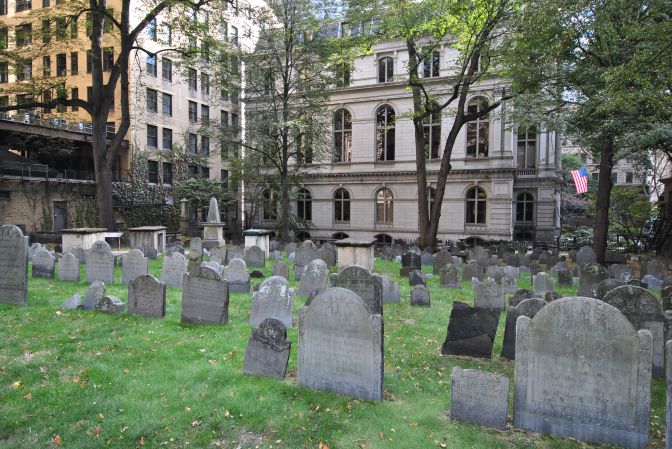
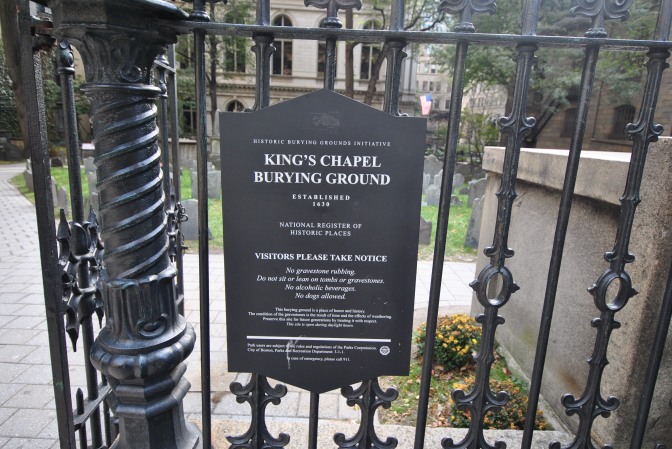
As with all burial grounds, without taking the time to learn about the lives of those commemorated by the gravestones jutting out of the ground, it becomes a meaningless jumble of memorials. Even more so at King’s Chapel as the tombstones no longer go with the actual gravesite of those etched in stone. At some point, perhaps to make way for the nice pathway that meanders through the burial ground, the stones were placed in neat lines and rows, forever forgetting their original, singular purpose – to mark individual graves. Now they join together to mark the collective graveyard – full of up to eight thousand people – some buried four deep and perhaps others buried upright.
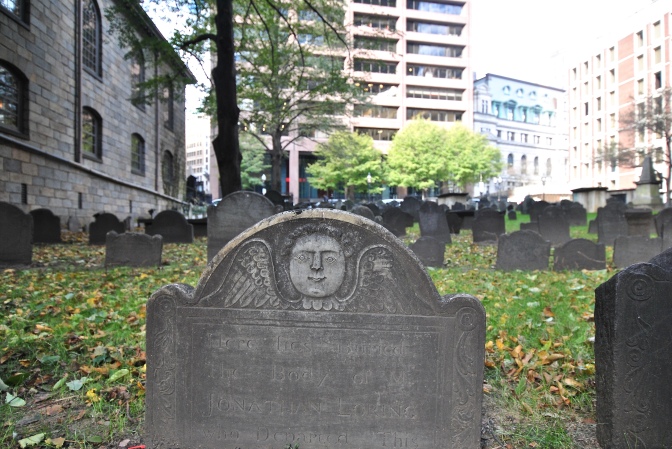
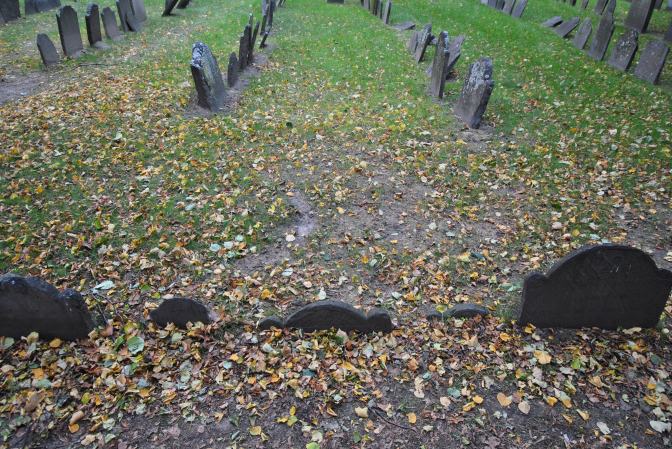
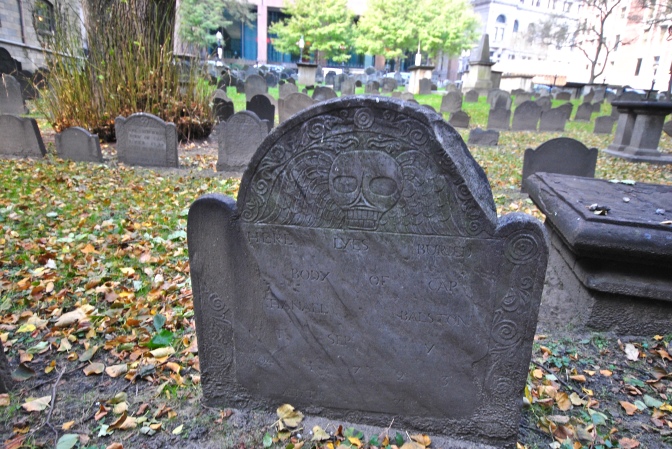
In the days when Isaac Johnson lived, this area was much different. Today’s nearby Beacon Hill was double its current height and sheep dotted the communal grazing area, now know as Boston Common. Johnson and others had arrived to nearby Charlestown originally, in the hope of creating something they were prohibited from doing in England – a true Puritanical society. When fresh water fell short, they left Charlestown to come here, to Shawmut.
Reverend William Blaxton, an Anglican minister who had arrived a decade prior with another group, most of whom returned to England, had claimed about eight hundred acres on the side of Beacon Hill near a spring. He’d built a cabin, planted an apple orchard and essentially lived as a hermit with his library of over one hundred books. Blaxton welcomed the new arrivals and a small village soon formed. This village would eventually become Boston.
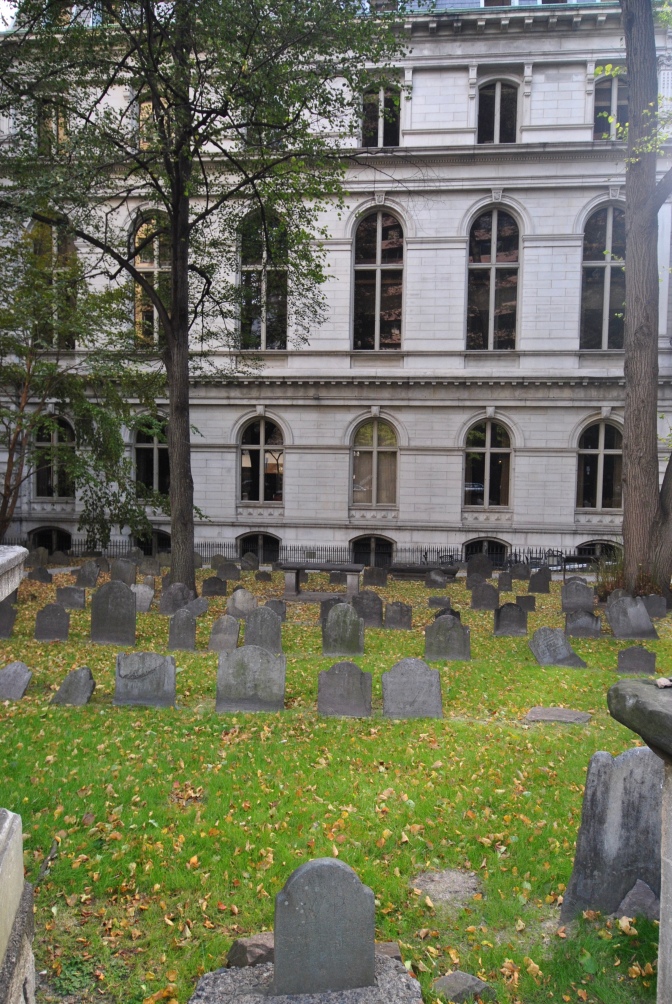
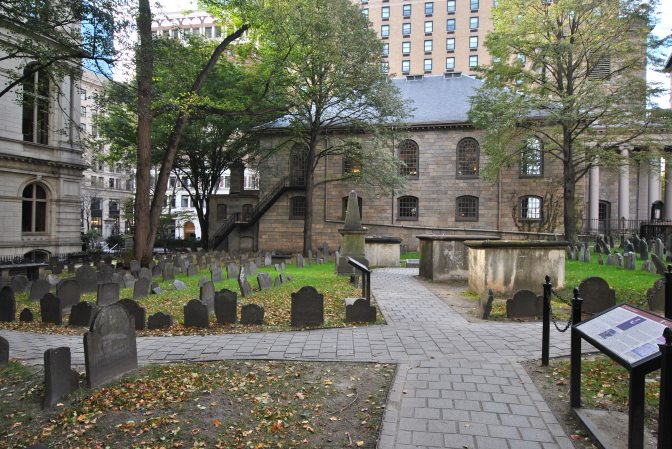
Walking around Kings Chapel Burying Ground today, it is hard to believe that this plot of land was full long before the American Revolution. In fact, none of the founding fathers are buried here. Instead, a cross section of the early colony can be found here – including one of the Plymouth Pilgrims, the first governor of the colony, a woman whose headstone supposedly inspired The Scarlett Letter, a pirate, the founder of Harvard College, the first book publisher in the British Colonies, as well as a couple of theologians, amongst many others.
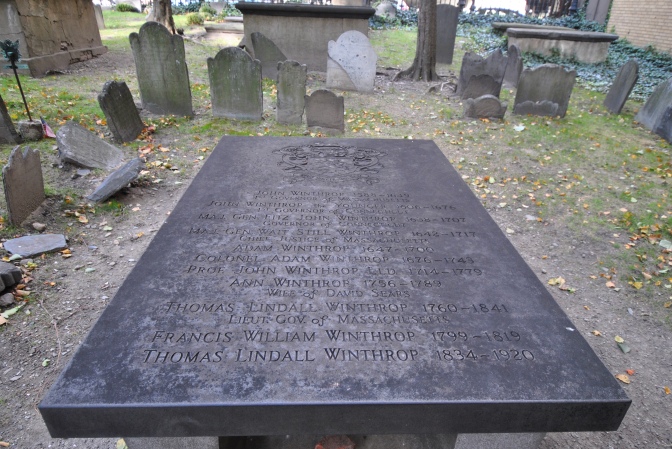
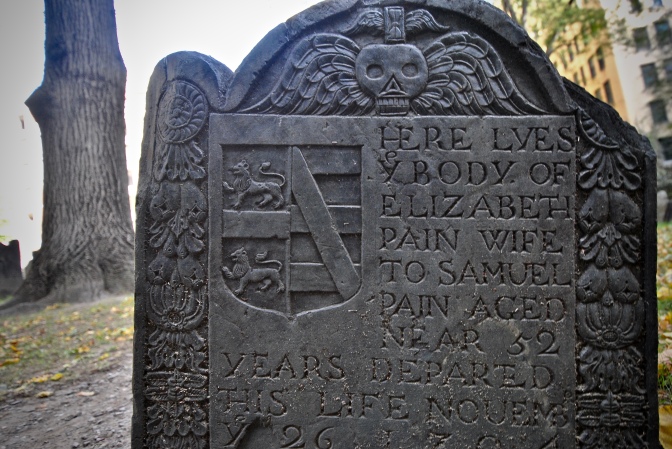
Walking alone on a cold Sunday morning in November, the silence is marred only by the rustling of birds in the decaying autumn leaves that cover the ground. Everyone buried here was born, lived a life, and died. They made their mark on a new world, setting into motion everything that has come down over the centuries to where we are now. The simplicity is gone. It is no longer about just surviving as it once was for them. We are given much longer to make our mark, but what are we doing with it? For them it was about the community, for us it is the individual. What will become of our actions? What will be our legacy?
Only time can tell that story.
All photos by the author.
Reblogged this on clawingmywayin and commented:
interesting history
LikeLike
Thanks for the re blog!
LikeLike